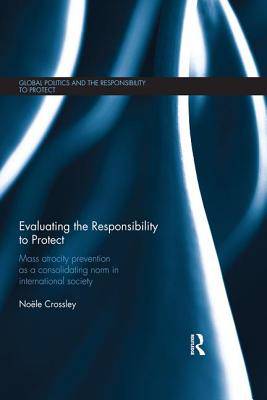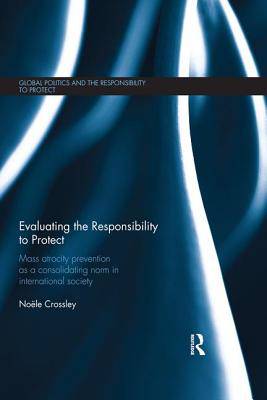
- Retrait gratuit dans votre magasin Club
- 7.000.000 titres dans notre catalogue
- Payer en toute sécurité
- Toujours un magasin près de chez vous
- Retrait gratuit dans votre magasin Club
- 7.000.0000 titres dans notre catalogue
- Payer en toute sécurité
- Toujours un magasin près de chez vous
Evaluating the Responsibility to Protect
Mass Atrocity Prevention as a Consolidating Norm in International Society
Noële CrossleyDescription
This book evaluates the extent to which the Responsibility to Protect (R2P) has consolidated as a norm in international society.
A consolidated norm in international society is defined here as a regularised pattern of behaviour that is widely accepted as appropriate within a given social context. The analysis is based on the assumption that the R2P could be regarded as a consolidated norm if it were applied consistently when genocide and other mass atrocities occur; and if international responses routinely conformed to the core principles inherent in the R2P: seeking government consent, multilateralism, prevention and regionalism. This book employs Finnemore and Sikkink's norm lifecycle model to determine the putative norm's degree of consolidation, with in-depth case studies of the international responses to crises in Darfur and Kenya serving to illuminate the findings. It advances the argument that, whilst the R2P had fully emerged as a prospective norm by 2005, it has not yet fully consolidated as an international norm. The R2P has been remarkably successful at pervading the international discourse but has been somewhat less successful at consistency in implementation in terms of adherence to its core principles as outlined above (the qualitative dimension of the R2P). Furthermore, it has been least successful, to date, in terms of consistency across cases in terms of resolve and tenacity. The volume concludes with a reflection on the norm's progress so far, and its prospects for further consolidation, assuming the R2P continues on its current trajectory.
This book will be of much interest to students of the Responsibility to Protect, humanitarian intervention, international law, security studies and IR.
Spécifications
Parties prenantes
- Auteur(s) :
- Editeur:
Contenu
- Nombre de pages :
- 236
- Langue:
- Anglais
- Collection :
Caractéristiques
- EAN:
- 9780367026172
- Date de parution :
- 23-08-18
- Format:
- Livre broché
- Format numérique:
- Trade paperback (VS)
- Dimensions :
- 156 mm x 233 mm
- Poids :
- 459 g

Les avis
Nous publions uniquement les avis qui respectent les conditions requises. Consultez nos conditions pour les avis.






